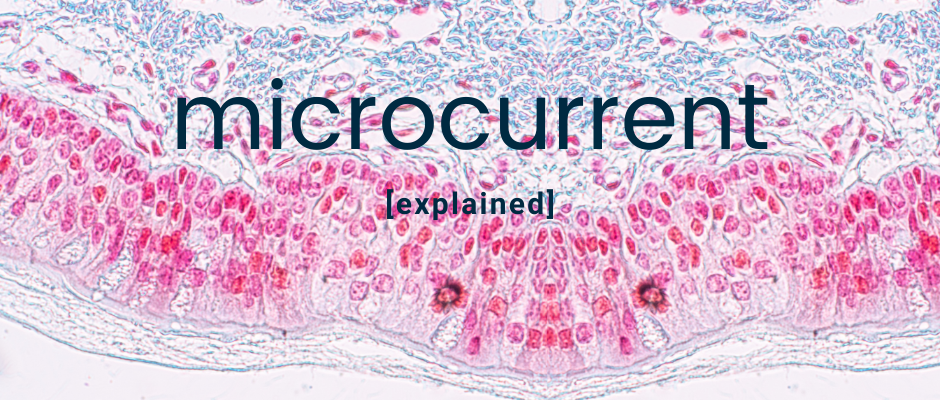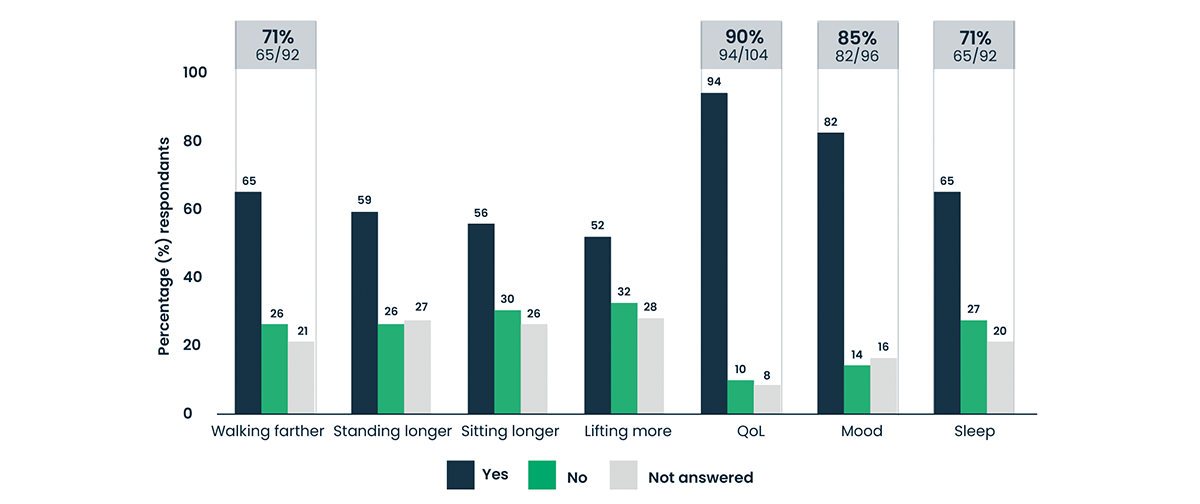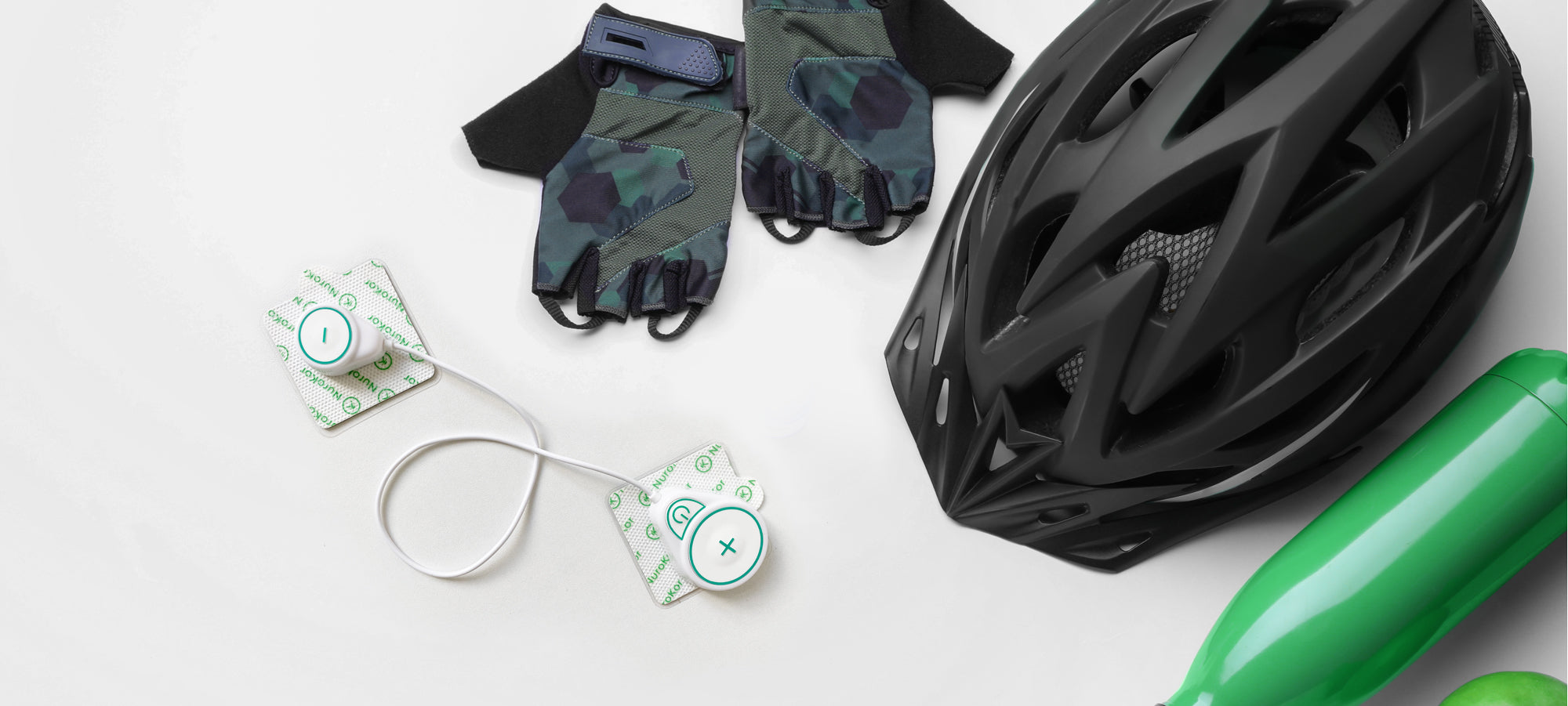Microcurrent stimulation. We wouldn’t be surprised if you haven’t come across it before. In this article, we’re going to be telling you what it is; how it can help with pain, inflammation, and healing; and why you should consider making it part of your health routine.
If you check your medicine cabinet, we’re willing to bet that you’ll find a range of painkillers - drugs like aspirin, ibuprofen, and more. You might have some plasters and disinfectant as well (that’ll be relevant later).
For decades, our medicine, therapies and treatments have been based on the principle of using drugs to affect certain processes in our bodies. Common examples would be taking insulin for diabetes or aspirin for a headache.
You’re probably thinking ‘that’s all great, but where’s this going?’.
Microcurrent stimulation, is that like electrotherapy?

The mitouch device from NuroKor Lifetech
Electricity, it powers almost everything in our modern world. But, surprisingly enough, the human body also relies on electrical signals. Not electricity in the same way that you’d find it in your phone or lights, but the same principle.
These signals are part of how we feel pain, temperature, and every other sensation. They also control many of the processes in our bodies, like making our hearts beat and regulating our breathing.
Microcurrent stimulation is a form of electrotherapy. Electrotherapy is when we apply a very gentle electrical current to the body in a specific place to influence some of these processes. There are many different specifications, frequencies and amplitudes of electrical current, which essentially determines how best to use them in treatment - also known as their parameters.
We’re just going to take a brief detour to talk about frequency and amplitude.
Imagine the sea. If you look at just one area of the water, it looks like the water is going up and down because waves are moving across it. We can think of these waves as being a bit like electrical current.
The number of times that the water in that area goes up and back down in one second is the frequency. How far up it goes - so what the highest point is - is the amplitude.
Here’s a graph that shows how we can think about these for an electrical current (don’t worry about the title, it’s just one type of current). The amplitude is how high or low the red line goes. The frequency is how many times it repeats its pattern in one second.

Amplitude is how far the red line goes up or down from the middle line, frequency is how many times it repeats its pattern in one second
Many of the body’s processes are controlled by specific frequencies and levels of electrical current, so if we can apply microcurrent that mimics the body's current levels, then we can influence the process.
What can microcurrent be used for?

Everything! Well, no, not quite, but almost.
Because our bodies run on electrical signals, it means that there is a very wide range of things that microcurrent works on. The most common ones are pain, inflammation, and healing.
So let’s see how.
Microcurrent stimulation for pain management
Returning to that medicine cabinet of yours, what would you do if you hurt your shoulder? Perhaps you were at the gym and you tried to beat your personal best (we approve of the effort!) but it was a bit too much. Or maybe you just slept in a strange position.

You’d probably take your painkiller tablet of choice and hope that within a few minutes it starts to get better, maybe do some gentle stretching as well.
We’ve probably all taken paracetamol at some point in our lives. But if you suffer more severe pain or you develop a condition like arthritis, then you may end up being given much more powerful drugs. These can come with significant side effects and may not work for everyone. You might even not be able to do everything you once could or live your life as you’d like.
'Scott, 43, from Southampton used to regularly cycle 14 miles as his commute, but osteoarthritis in his knee put a stop to it. Taking powerful painkillers and unable to be as active as he would like, Scott’s daily life was seriously limited by his condition.'
While Scott didn’t use microcurrent (he used one of our other forms of electrotherapy), it just goes to show the impact that chronic conditions and powerful painkillers can have on our lives.
By applying microcurrent to the right places, people can reduce how much pain they feel, while supporting the functional health and recovery of soft tissues, in order to give them more freedom from pain, immobility and injury.
How does microcurrent stimulation help pain?
One of the main causes of pain is damage or disruption of our cells - the tiny structures that our bodies are made of. If a cell is damaged, then the processes in that cell - often controlled by electrical signals - begin to go wrong and this leads to more problems.
As we discussed earlier, we can use microcurrent to mimic the electrical current levels in the body, in this case the ones the cell should be sending to itself and other cells. By mimicking these, we can promote certain the cell to respond and work as it should while it heals and gets back to normal, when it can take over again.
Rather than suppressing the pain signals reaching your brain, microcurrent addresses the problem at its source. However, you can combine it with another form of electrotherapy that also influences the pain signals travelling to the brain - a powerful combination!
Better still, microcurrent stimulation comes with a bunch of other benefits that also improve the healing process. More on that in a moment.
Inflammation

Whether you're a runner, a dancer or play 5-a-side, chances are you’ve experienced it. Ever noticed a redness to your skin around the knees or elbows after exercising? Or how the area around a cut turns red? That’s inflammation.
Inflammation sounds, and looks, like a bad thing. But it’s a central part of how your body heals injuries. It’s during this phase that the body is cleaning up the damage and removing anything that shouldn’t be inside so that it can get on with healing.
Despite being necessary, inflammation can sometimes get out of control and your body continues the process long after it should have stopped. This can lead to a whole range of illnesses, from arthritis (a condition that affects over 10 million people in the UK), cancer, and asthma to heart disease and type 2 diabetes.
Controlling and treating inflammation
There’s a whole range of ways to manage inflammation. Many drugs like aspirin or steroids are shown to reduce it or prevent it. However, these can cause problems if taken for long periods of time, including for the kidneys (aspirin) or the immune system (steroids). Obviously, we would rather avoid those problems.
Lifestyle changes are another option, including being careful about what you eat and watching your weight. It’s annoying to do, we know, but sometimes there’s no choice. Unfortunately, individuals’ nutritional needs will vary, so making generalised recommendations is challenging.
How microcurrent stimulation affects inflammation
The gentle electrical currents that microcurrent stimulation uses can influence the production of substances in the body that regulate inflammation. If fewer of these substances are being produced, then there is less inflammation and the risk of it getting out of control may be lower.
Microcurrent stimulation can also help bring chronic inflammation back to more appropriate levels, it doesn’t have to be applied in advance.
Influencing inflammation can also help with managing pain. When the body is damaged, nerves - the structures that transmit signals to our brain as part of how we feel - can become inflamed. This is one of the things that can cause pain, so if this inflammation of the nerves can be influenced then it can lead to feeling less pain.
Microcurrent stimulation for wound healing

Remember the plasters and disinfectant from the cabinet? Well, this is where they’re relevant. When you get a cut or pull a muscle, there’s not a huge amount you can do to help it get better apart from keeping it clean and maybe doing some physiotherapy.
Let’s take a look at how microcurrent stimulation can support your body’s healing processes.
We’re tackling this last because it builds on the same principles that we mentioned for how it can help pain and inflammation. The electrical currents used in microcurrent stimulation can optimise the various processes that are part of healing - the beneficial ones happen more, while the harmful ones happen less. This is done by applying currents and frequencies in the appropriate parameters, as we talked about at the beginning.
To give you an idea of how effective microcurrent can be for healing, let’s take a look at the results of a couple of academic studies. We’ll keep it brief, don’t worry.
Microcurrent is not a new treatment method. In 1968, researchers studied the effects of microcurrent stimulation on surgical scars in rabbits and leg ulcers in humans. The scars healed faster with microcurrent, whilst the leg ulcers, which had resisted other treatments, healed completely within six weeks.
Another study with ulcers in 1976 - we’re not quite sure why they’re used so much - showed that applying microcurrent to ulcers healed them twice as fast as they would otherwise.
The final study we’ll look at, from 2019, showed that microcurrent stimulation aided the healing of burns and reduced the growth of bacteria.
As you can see, microcurrent can make a real difference to healing injuries.
Read this article if you’d like to know more about how electrotherapy can be used for treating wounds.
Getting the most from your exercise with microcurrent stimulation
But what about performance?

You may not have been expecting or thinking about it, but by improving your healing and managing pain and inflammation, you can improve your recovery from exercise. In turn, this can improve your gains from training.
We’ll be bringing you a detailed look at how in the near future, but for now have a look at our website to learn more about how to use microcurrent stimulation to get the most from your training.
Is microcurrent stimulation safe?
What’s great about microcurrent is that it has an extremely low risk of side effects. The strength of the electrical current applied to the body is mimicking natural levels so it can’t even be felt. Added to that, the whole way it works is by encouraging your body to optimise what it would be doing anyway.
Just make sure to follow the instructions and advice of health care providers and don’t use it if you have any implanted electrical devices like cochlear hearing devices or a pacemaker, or are pregnant. You should also speak to your doctor first if you suffer from epilepsy, seizures, cancer or are recovering from cancer.
Why you should choose microcurrent stimulation for pain, inflammation, or healing

So we know how microcurrent helps with pain, inflammation, and healing, but why should you still reach for it over your other options?
There are three main reasons:
- It’s drug free
- It’s non-invasive
- It optimises your body’s system
Drug free means that it doesn’t come with the same risks and side effects profiles that some powerful drugs or long-term use carry.
Non-invasive means that you don’t need surgery, injections or anything else that might break the skin. Some traditional treatments require regular injections or objects to be planted inside your body. Microcurrent stimulation just needs you to put pads on your skin.
Optimising your body’s systems means that it doesn’t work by directly overriding or interfering with body processes as other treatment methods do. Instead, it optimises those processes when they’re not working at their peak to help you get back to your best.
If you find yourself struggling with chronic pain, inflammation, or wounds, microcurrent stimulation could make a real difference.
At NuroKor Lifetech, we have years of experience in developing technology to solve health challenges. Our signature technology device gives you access to microcurrent stimulation and many other electrotherapy treatment options, all in easy-to-use, wearable formats.
If you want to experience the benefits of microcurrent stimulation for yourself, visit our shop today.
If you’d like to know more about the effectiveness of bioelectronic technology, contact us
Read our blog post to know more about arthritis and how bioelectrical therapy can help



